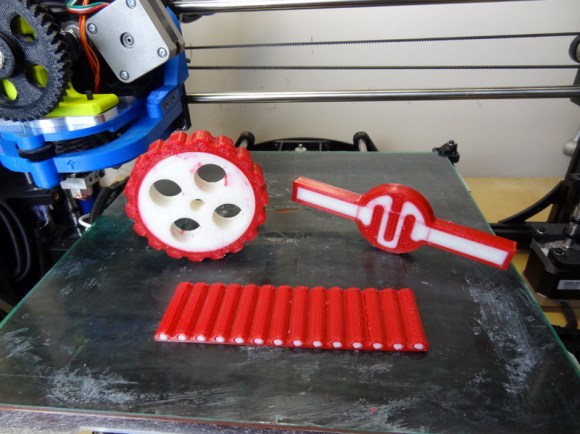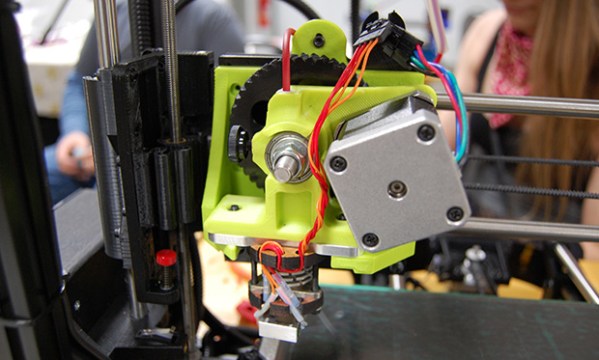
Ever heard of the FlexyDualie extruder? It’s a new opensource dual extruder from Aleph Objects (makers of the Lulzbot and TAZ), specifically designed for printing in a hard material — and a flexible one!
[James Bruton] of XRobots just got his hands on one and a new TAZ printer, and he’s shared his thoughts. He’s using ABS plastic and Ninjaflex rubber filament to test it out. Sure you can sometimes print with Ninjaflex using a regular extruder… but get ready for headaches as it jams in your extruder guide. The FlexyDualie is specifically designed for extruding flexible filaments which results in a lot less headaches, and a lot more productivity!
In the following demonstration video, [James] shows us the awesome possibilities of printing parts in both a hard and soft material. He even goes into detail on how to setup Slic3r for multi-material STL files.
Continue reading “Hands-on With The FlexyDualie 3D Printer Extruder”











